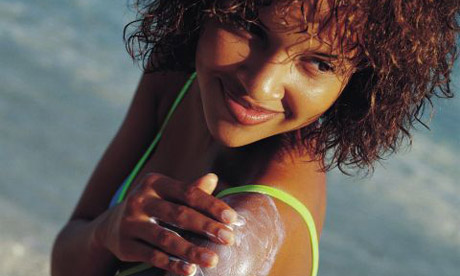
Cosmetics companies are taking insufficient steps to ensure face creams and other products that contain nanoparticles are safe, according to a report by a leading consumer association.
The Which? report, which drew on advice from nanotechnology experts, warns that untested particles, which can be 1,000 times smaller than the width of a human hair, are being used in products without sufficient safety testing.
Nanoparticles are used in sun screens to block ultraviolet radiation, in emulsions to contain vitamins in face creams, and in other moisturisers to kill off bacteria. But of 67 firms approached by Which? only eight submitted information on the use of nanotechnology in their products.
Nanotechnology, the science of manipulating matter on the molecular level, generally raises no new safety issues, but the tiny particles can behave in unusual ways, in some instances becoming toxic. Existing safety rules do not take into account materials posing risks at the nano scale.
A common use of nanotechnology is in the addition of titanium dioxide or zinc oxide particles to sun screens, and European experts have demanded more safety tests to investigate the effects of these lotions on damaged skin.
The consumer body's report, Small wonder? Nanotechnology and cosmetics, is published today. But safety concerns over nanoparticles in cosmetics were raised by the Royal Society in a report in 2004, which called for independent safety assessments on all products containing nanoparticles. The society also urged firms to declare the safety tests they did.
Ann Dowling, who chaired a Royal Society working group on nanotechnology, said: "We are disappointed at the continuing lack of transparency in this area."
The society's recommendations were not acted upon, the Which? report says. "The cosmetics industry needs to stop burying its head in the sand and come clean about how it is using nanotechnology," said Sue Davies, chief policy adviser at Which? "Many of the applications could lead to exciting, revolutionary developments ... but until all the necessary safety tests are carried out, the simple fact is we just don't know enough. The government must introduce a compulsory reporting scheme for manufactured nanomaterials ... and only those that are independently assessed as safe should be allowed to be used in cosmetics."
In May researchers at the Institute of Occupational Medicine, Edinburgh, asked the government to restrict use of carbon nanotubes - in car panels, tennis rackets and bike frames - claiming they posed a cancer risk similar to that of asbestos.
In 2006 the government launched a voluntary reporting scheme to find out what kinds of nanomaterials were available on the market. The scheme, which was due to guide the development of new regulations, received only 12 responses from industry in two years.

